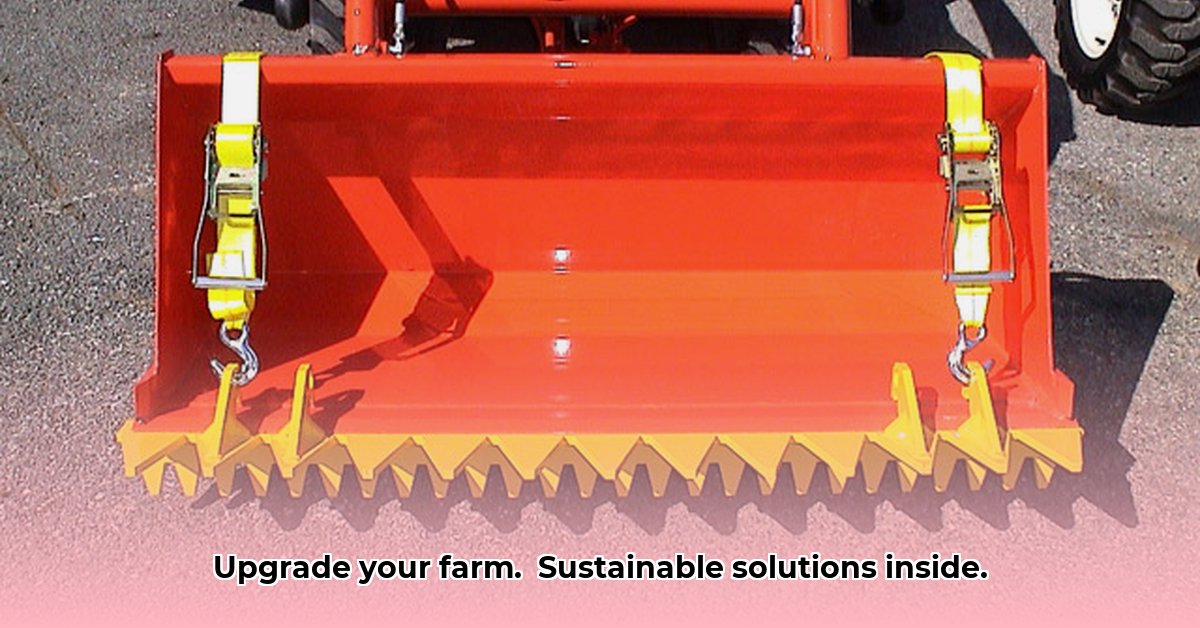
Choosing the Right Tractor Attachments for Your Sustainable Farm
Thinking about boosting your farm's sustainability? The right tractor attachments can significantly increase efficiency and reduce your environmental footprint. This guide provides a step-by-step approach to selecting and using attachments effectively. But how do you choose from the many options available? Let's explore some key considerations. Remember, choosing the right tools is crucial; using a sledgehammer to crack a nut isn't efficient, and neither is using the wrong attachment for your farm's needs. For more information on lawn tractor attachments, check out this helpful resource: lawn tractor attachments.
Assessing Your Farm's Unique Needs
Before investing, thoroughly assess your farm's specific requirements. What crops are you growing? What soil type do you have? What is the scale of your operation? A large-scale operation turning over heavy clay soil might need a powerful plow, while a small organic farm with lighter soil may be better served by a cultivator that minimizes soil disturbance. Consider the size of your fields and the terrain. Hilly farms might require attachments specifically designed for slope work.
Prioritizing Multi-Functional Attachments for Maximum ROI
Maximize your return on investment (ROI) by prioritizing multi-functional attachments. A rotary tiller, for example, prepares seedbeds, mixes compost, and aids in weed control. A box blade is another versatile tool, used for grading, land leveling, and even light snow removal. These versatile tools save you money and storage space in the long run. What tools offer the greatest combination of uses for your specific situation?
Understanding the Environmental Impact of Your Choices
While tractor attachments boost efficiency, consider their fuel consumption and the resulting greenhouse gas emissions. "The increased productivity and reduced labor often offset the environmental impact," notes Dr. Emily Carter, Agricultural Engineer at Cornell University. However, prioritizing fuel-efficient models and sustainable materials is crucial. Choosing lighter attachments reduces fuel consumption, which minimizes your carbon footprint. What steps can you take to mitigate the environmental impact of your equipment?
A Step-by-Step Guide to Selecting and Using Tractor Attachments
Follow these six steps for a successful and sustainable approach to selecting and using your tractor attachments:
- Analyze Your Needs: Carefully assess your farm's needs, considering crop types, soil conditions, field size, and terrain.
- Thorough Research: Investigate different attachments, comparing features, costs, and environmental impacts. Consult online resources and local agricultural suppliers.
- Prioritize Essentials: Focus on attachments with the highest ROI. Starting with a core set of essential tools is often the most financially prudent strategy.
- Seek Expert Advice: Consult with experienced farmers, agricultural extension agents, or equipment dealers for personalized guidance.
- Invest in Training: Proper operation and maintenance are critical for maximizing lifespan and productivity. Operator training is key to safe and efficient use.
- Consistent Maintenance: Regular maintenance is essential for safety and longevity, minimizing waste and maximizing efficiency. Develop a preventative maintenance schedule.
Fuel Efficiency and Sustainable Practices: Choosing Wisely
Selecting fuel-efficient attachments is a cornerstone of sustainable farming. Heavier attachments require more power, increasing fuel consumption and greenhouse gas emissions. Lighter, more efficient models are becoming increasingly available. "Many manufacturers are now producing lighter-weight attachments made from durable, yet lighter materials," shares John Miller, owner of Miller's Farm Equipment. This results in lower fuel costs and a smaller environmental impact. How can you find the most fuel-efficient options for your needs?
Exploring Electric and Hybrid Options for a Greener Future
The agricultural equipment sector is innovating, with electric and hybrid attachments offering cleaner, more sustainable alternatives. Although the initial investment might be higher, the long-term savings in fuel costs and reduced emissions make them a compelling choice. These attachments are also quieter, improving working conditions and reducing noise pollution. What are the long-term cost benefits of these emerging technologies?
The Cost-Benefit Analysis: A Long-Term Perspective
Consider the total cost of ownership, encompassing upfront costs, fuel consumption, repairs, maintenance, and environmental impact. A slightly more expensive, efficient, and durable attachment might save you money and reduce your ecological footprint in the long run. What financial and environmental factors should you weigh when making your decisions?
Ultimately, selecting the right tractor attachments is a crucial step towards building a successful and environmentally responsible farm. By prioritizing careful planning, informed choices, and a commitment to best practices, you can maximize benefits while minimizing your environmental impact. The journey to sustainable farming is ongoing—continuous learning and adaptation are paramount.